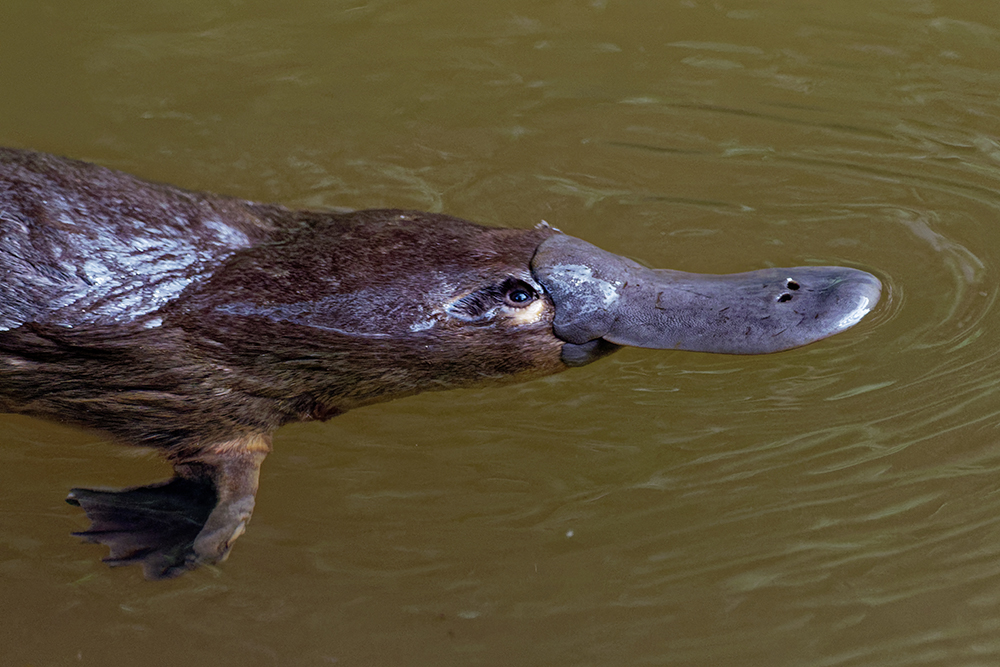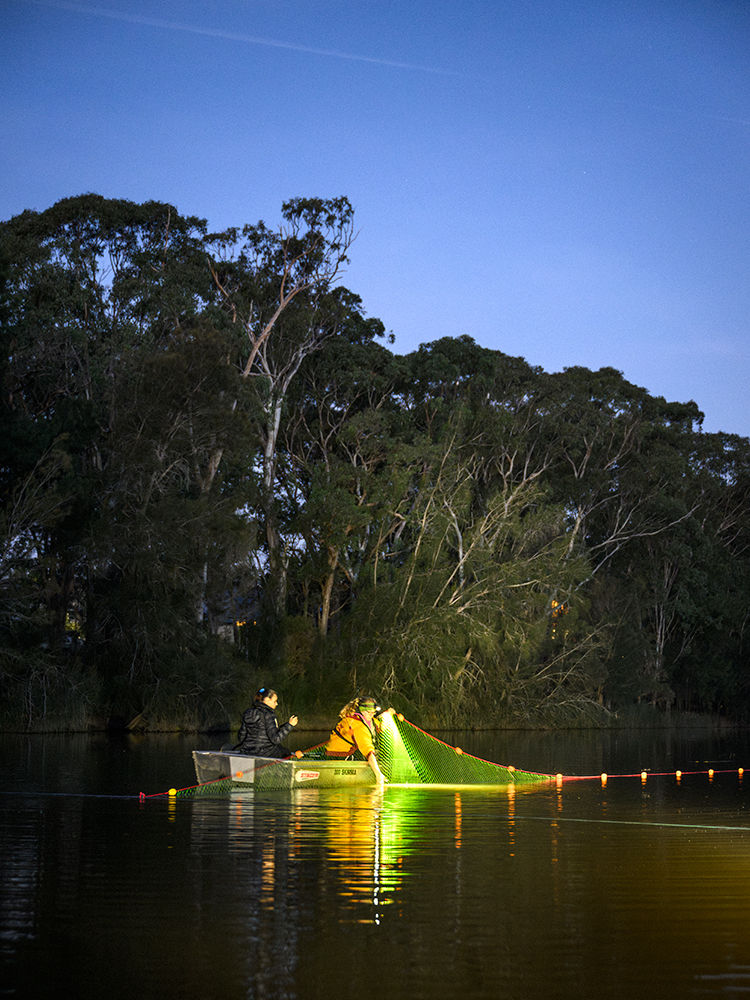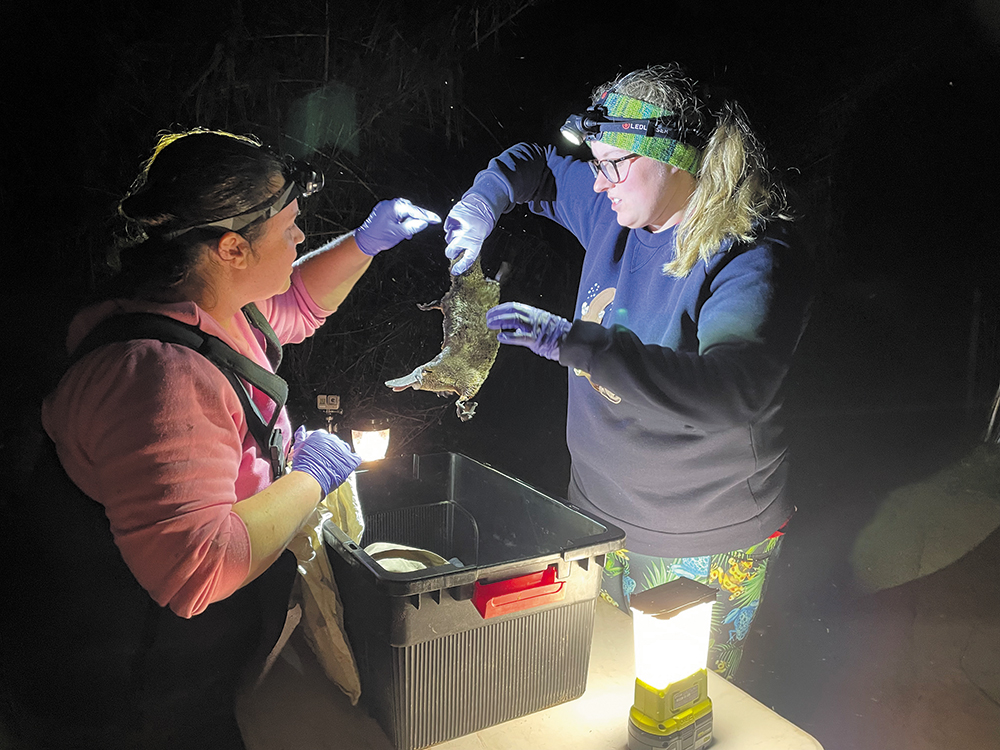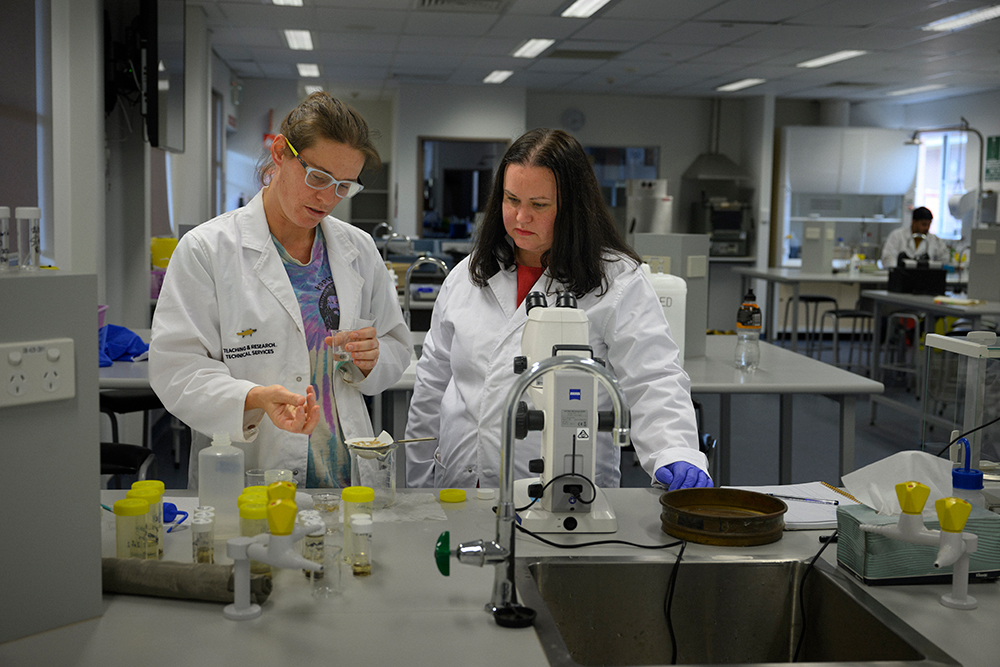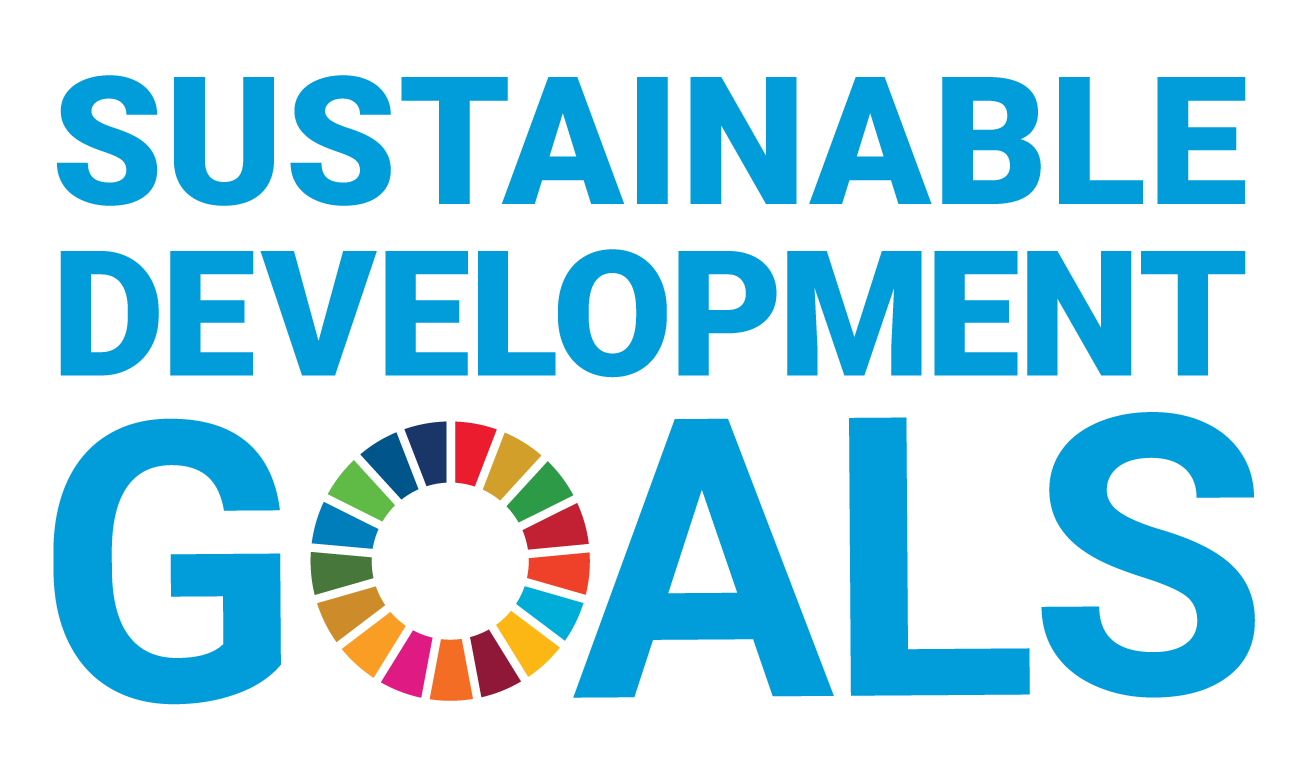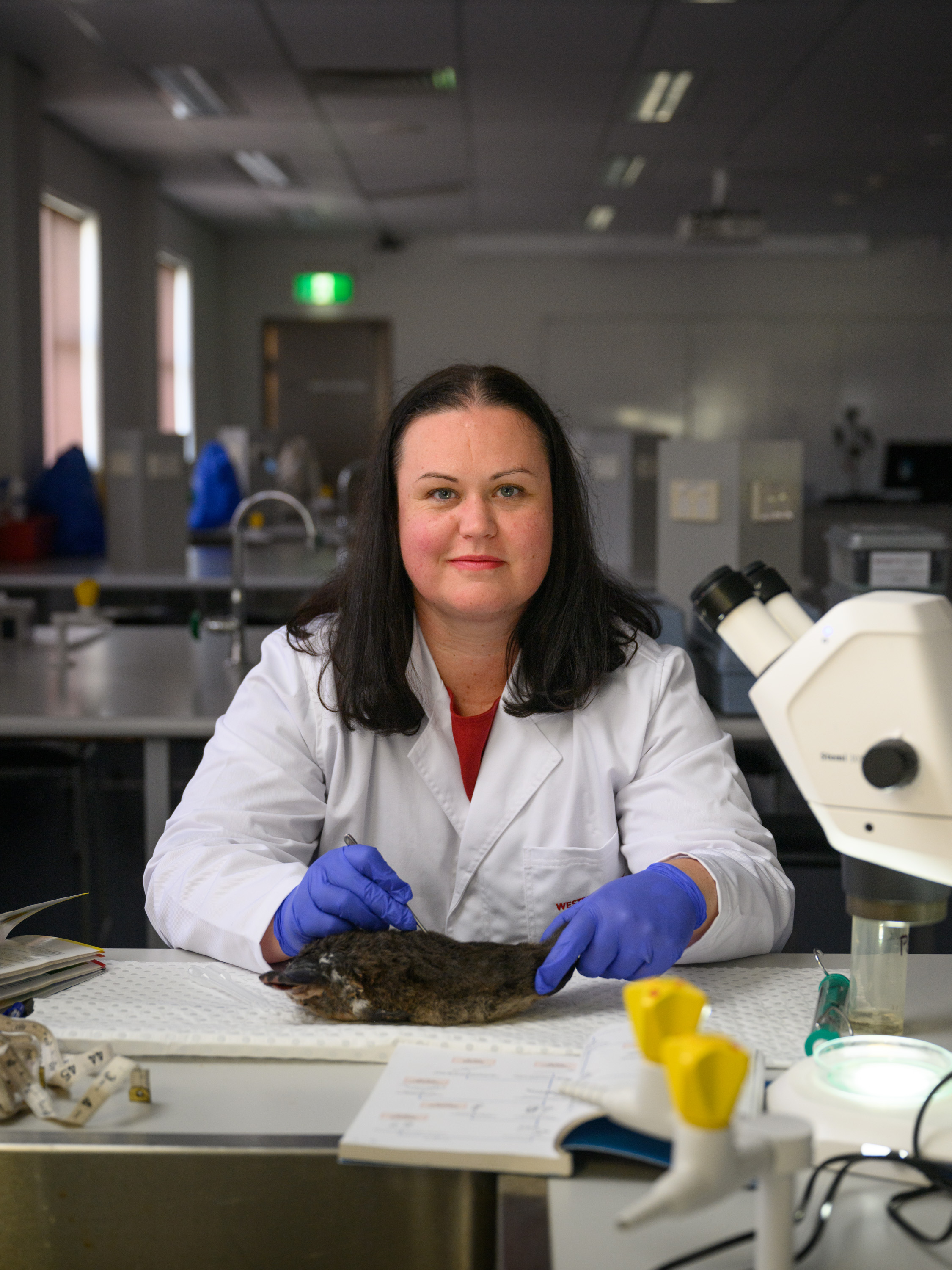You can search for courses, events, people, and anything else.
When Dr Michelle Ryan began her career as an aquatic ecologist, freshwater turtles were her focus. But she quickly found her attention drawn to another riverine creature: the platypus.
“They’re so quirky, there’s no animal like them anywhere else in the world,” says Ryan, now a senior lecturer in ecology and environmental science at Western Sydney University.
Endemic to eastern Australia the platypus, a monotreme, is a rarity among mammals, laying eggs rather than birthing live young. Males have sharp spurs on their hind limbs, with which they can inject venom.
The platypus’s appearance — an odd assemblage of features approximating an otter’s body and fur, a beaver’s tail and a duck’s webbed feet and bill — was thought so implausible that scientists in Europe who first observed specimens sent from Australia believed themselves to be the victims of a hoax.
“Platypuses are bizarre; every feature of them is weird and amazing,” says Ryan.
They are celebrated as one of Australia’s most recognisable faunal emblems, but unlike other native species, such as the koala and kangaroos, there is relatively little understood about them. That’s because they’re incredibly challenging to observe, explains Ryan, who is one of only a handful of researchers studying them in the field. “Platypuses are really elusive — they’re out mainly during the night and they don’t like being around people, so they’re really hard to spot.”
Studying them is very time-consuming and expensive, often involving nights wading out into muddy waters, setting nets, and waiting hours for a platypus to swim into them. As a result, there’s a dearth of data on the platypus across the Sydney region, including information on population size, range and health, Ryan adds.
Gathering more data will not only help scientists better understand the species, it will also allow the platypus to be better protected against threats such as land clearing and pollution under the law. “I think one of the reasons why they haven’t been listed as a threatened species in New South Wales is because we don’t have that baseline data,” says Ryan. “It’s something we’re working towards, because platypuses are here but they’re under pressure.”
POSITIVE FOR PLATYPUS
Ryan and her team at Western have been sampling numerous freshwater rivers, creeks and streams in the Greater Sydney area since 2019, searching for signs of platypuses. “Many people don’t even know there are platypus in their waterways,” she says.
Lisa Harrold, president of the Mulgoa Valley Landcare Group in western Sydney, can attest to that. From historical anecdotes, she knew there probably would once have been platypus living in the 10 km stretch of creek she and her team of volunteers are working to restore. “But I have been all along Mulgoa Creek on many occasions over the past 30 years and I’ve never seen a platypus, nor have I heard of anyone seeing one.”
So when Ryan and her team approached Harrold two years ago seeking permission to sample the water for environmental DNA — tiny traces of genetic material shed by living things into their surroundings — she was surprised that the results came back positive for platypus in two out of four locations tested.
“It was a reward from decades of restoration,” reflects Harrold. “Michelle’s work has energised me to work so much harder to raise awareness in the broader community about what is going on in the creek that may affect platypus populations.”
Similarly, testing of more than 35 locations in the Cattai Creek catchment area northwest of Sydney revealed that platypuses were present in roughly half of the locations sampled. “Nobody in the scientific community had realised we had platypus in our urban waterways, but Michelle came along and built up the scientific literature,” says Sue Martin, chair of the Cattai Hills Environment Network (CHEN).
Following on from the environmental DNA testing, Ryan and her team are now studying platypuses at an individual level. Using nets, they briefly capture the animals from the water to record their sex, weight, length and body fat. They also microchip the animals for future identification and take fur samples to test for the presence of heavy metals.
While she admits much more work must be done to build a comprehensive picture, what her team has discovered so far has been encouraging. Platypus population density is low, comprising a small number spread over a relatively large area, but the “really good news is that we have juveniles, so we know that they are breeding,” she says. “And all the platypuses we’ve captured have really good fat stores and seem to be relatively healthy.”
Need to know
- The platypus is iconic, yet relatively little is known about it.
- Michelle Ryan and her team are working in waterways throughout western Sydney to collect baseline data.
- This will help foster greater protection for platypus, as well as the freshwater habitat they live in.
CREATING RIPPLES
For Ryan, getting the local community involved is key to the work, and she holds frequent talks to raise public awareness on how people can help protect platypus. This includes offering tips, such as picking up dog poo — to prevent it from being washed into waterways and causing an excess of nutrients — and not tipping chemicals down the sink.
It’s also why Ryan enlisted citizen scientists from Mulgoa Valley Landcare Network and CHEN to assist with eDNA sampling, and engaged volunteers from Greater Sydney Landcare’s Streamwatch programme to help monitor water quality.
“When you do conservation monitoring and get to work alongside researchers like Michelle, it makes the work so much more meaningful when you see that your data is contributing to the bigger picture,” says Streamwatch’s project officer, Jessica Lumbroso.
“People really connect with the platypus,” says Ryan who hopes this will encourage the public to take better care of waterways in their neighbourhoods.
“Hopefully it makes them think: ‘Hey this is not just a stormwater drain or somewhere where we can dump rubbish, but a place that is home to an amazing creature that needs protecting,’” says Ryan.
In 2021 she was appointed the ‘Waterkeeper’, or voice of protection, for the Hawkesbury-Nepean River, as part of a global movement of community-based organisations that appoint on-the-river advocates.
The platypus can act as a flagship species — a symbol and rallying point for the conservation of freshwater habitats and their inhabitants in western Sydney. Protecting it, therefore confers benefits to the wider ecosystem.
“Until you have a really cute animal like the platypus, the broader community isn’t that interested” in volunteering to help pull weeds along the riverbank to restore the habitat, or protecting less charismatic creatures such as a tiny mussel, says Harrold. “There are so many species that can benefit from that one flagship species.”
Already, Ryan’s work is creating ripples at the policy level. “The information her team provides for us as a community group allows us to go back to our decision makers and say that this is a really important habitat…we have platypus here, we need to protect them,” notes Harrold.
Australia’s federal government is taking greater interest as well. In November 2023, it pledged $1 million to establish three sanctuaries, or ‘Platypus Parks,’ along the Hawkesbury River, which Ryan will help develop. This is part of a wider effort to clean up and restore urban waterways.
She is proud of the work they have done so far. “We’ve added 66 new points where we’ve found platypus throughout western Sydney,” Ryan says. “We’re hoping that that information helps create healthier waterways.”
Meet the Academic | Dr Michelle Ryan
Dr Michelle Ryan is a Senior Lecturer in Ecology and Environmental Science at Western Sydney University and the current Hawkesbury-Nepean Waterkeeper. Michelle’s research includes human impacts on aquatic environments with a focus on the ecological health of freshwater systems and aquatic animals. Her current research focuses on the iconic platypus and the health of the platypus populations in a growing Greater Sydney.
Michelle is passionate about waterway health and uses her research into the platypus to connect the community, industry and governments with waterways to create resilient waterways throughout western Sydney.
Credit
Future-Makers is published for Western Sydney University by Nature Research Custom Media, part of Springer Nature.
© phototrip/iStock/Getty

